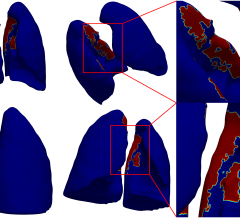December 12, 2011 — An independent panel convened this week by the National Institutes of Health (NIH) has concluded that many men with localized, low-risk prostate cancer could have treatment delayed until warranted by disease progression. These patients would be closely monitored to determine when that point has been reached.
However, monitoring strategies—such as active surveillance—have not been uniformly studied, and available data do not yet point to clear follow-up protocols. The panel recommended standardizing definitions and conducting additional studies to clarify which monitoring strategies are most likely to optimize patient outcomes.
“It’s clear that many men would benefit from delaying treatment, but there is no consensus on what constitutes observational strategies and what criteria should be used to determine when treatment might ultimately be needed among closely-monitored men,” said Patricia A. Ganz, M.D., conference panel chairperson; Ganz is also director of the division of cancer prevention and control research at the Jonsson Comprehensive Cancer Center at the University of California in Los Angeles.
Prostate cancer is the most common non-skin cancer in men in the United States. It is estimated that in 2011, approximately 240,000 men will be newly diagnosed with prostate cancer and 33,000 will die of the disease. More than half of these cancers are localized (confined to the prostate), not aggressive at diagnosis, and unlikely to become life-threatening.
However, approximately 90 percent of patients receive immediate treatment, such as surgery or radiation therapy. For many of these patients, treatment has substantial short- and long-term side effects, such as diminished sexual function and loss of urinary control; these side effects often come without clear benefits, such as improved survival. Identifying appropriate management strategies for different subgroups of patients is critical to improving survival and reducing the burden of adverse effects.
Currently, clinicians often describe two alternatives to immediate treatment of low-risk prostate cancer: observation with and without the intent to cure. Observation without intent to cure, sometimes referred to as watchful waiting, is a passive approach, with treatment provided to alleviate symptoms if they develop. Observation with intent to cure, often referred to as active surveillance, involves proactive patient follow-up; blood samples, digital rectal exams, and repeat prostate biopsies are conducted on a regular schedule, and curative treatment is initiated if the cancer progresses.
The panel identified emerging consensus in the medical community on a definition for low-risk prostate cancer: a prostate-specific antigen (PSA) level less than 10 ng/mL and a Gleason score of 6 or less. Using this definition, the panel estimated that more than 100,000 men diagnosed with prostate cancer each year would be candidates for active monitoring rather than immediate treatment. Importantly, however, the panel found that protocols to manage active monitoring still vary widely, hampering the evaluation and comparison of research findings.
“Prostate cancer affects some 30-40 percent of men over the age of 50. Some of these men will benefit from immediate treatment, others will benefit from observation. We need to standardize definitions, group patients by their risks, and conduct additional research to determine the best protocols for managing low-risk disease,” stated Ganz.
The panel further recommended disease terminology should be refined as a result of changes in the patient population with prostate cancer due to prostate-specific antigen (PSA) testing. Because of the very favorable prognosis of PSA-detected, low-risk prostate cancer, the panel recommended strong consideration be given to removing the anxiety-provoking term “cancer” for this condition.
The panel also found clinicians’ framing of disease management options is an important factor in patient decision-making. Other influential factors include views of family members, cancer experiences of family and friends, lifestyle priorities and personal philosophy. Findings from studies in communication sciences and behavioral economics could be applied in clinical settings to promote informed, shared decision-making.
While research continues to fill knowledge gaps and develop consensus, the decisions faced by men and their providers following a diagnosis should be highly individualized; biological, psychological, social, and cultural factors should also be considered.
With regard to future research, the panel recommended against future federal funding for single-institutional site studies. Instead it emphasized the importance of supporting multisite clinical research studies.
The panel also supports the establishment of registry-based cohort studies that collect longitudinal data on active monitoring participants, including clinical and patient-reported outcomes.
For more information: http://consensus.nih.gov


 December 04, 2025
December 04, 2025 









